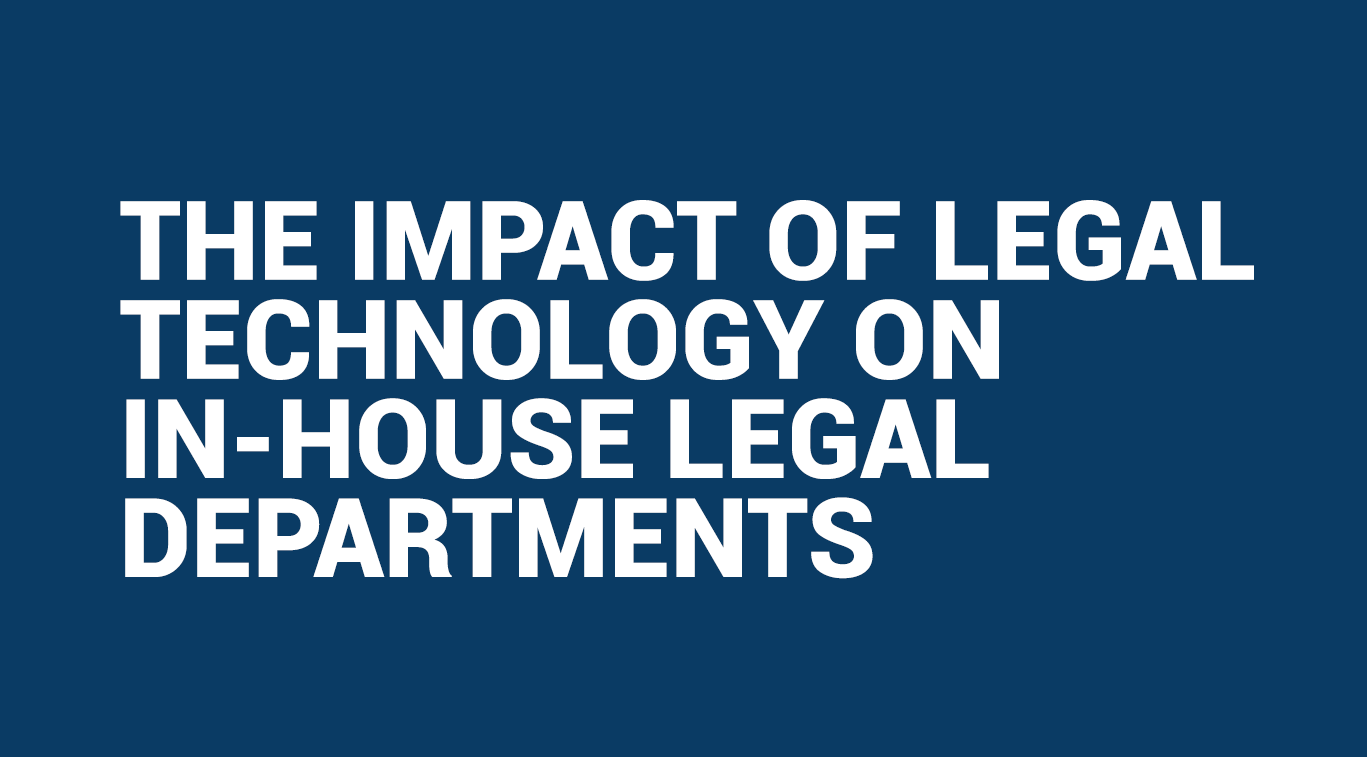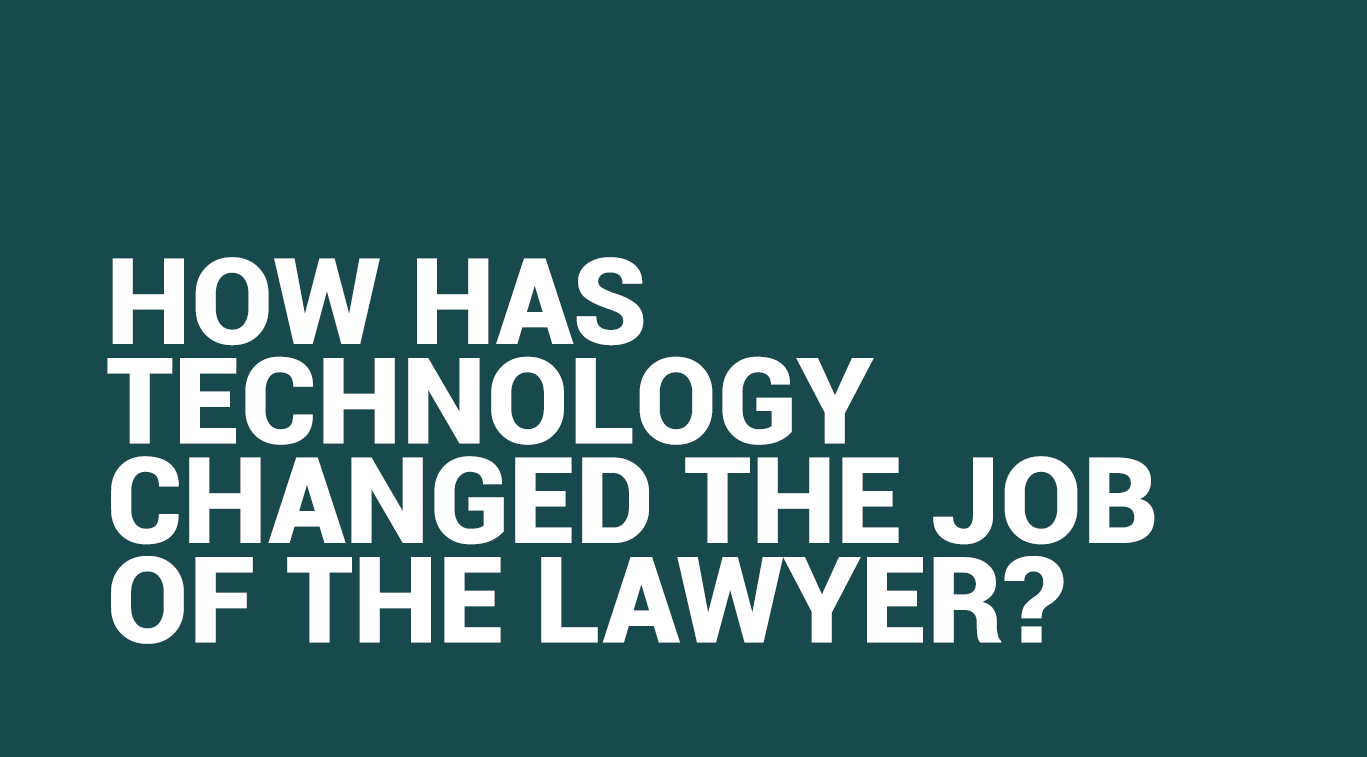The Impact of Legal Technology on In-House Legal Departments

Written by Maryam Khan
Blogger

According to a recent survey conducted by Statista, almost 3.9% of an in-house legal department’s budget was spent on legal technology in 2020 [1]. It is further predicted that this budget is likely to increase by 12% by 2025 [2]. Moreover, research conducted by technological research and consulting firm, Gartner, suggests that legal departments will spend three times their existing budget on legal technology by 2025 with nearly 50% of a lawyer’s tasks involving high-profile business transactions being automated by 2024 [3].
The effects of the pandemic forced many in-house legal departments to change course in 2020 and consider extensive workflow automation, particularly for tasks surrounding corporate transactions. This article explores the impact legal technology software has had on in-house legal departments and what incorporating technology means for them in the future.
Industry Specific Technology Priorities
The level of in-house legal technology adoption is dependent on the type of industry and business sector the company is involved in [4]. For example, in-house counsel in more fast-paced or technologically advanced industries (finance, software development etc.) are increasingly using technology to boost efficiency whereas in-house counsel in more traditional industries (construction) are still operating the more old-fashioned way and have not experienced much change [5]. Prioritizing technology is also dependent on the values and attitudes of company leadership and whether or not they are ready to embrace change. As a result, there is still reluctance to take the technological leap despite 85% of in-house legal professional’s surveyed by Thomson Reuters claiming technology will positively impact their department over the five years [6].
Leveraging Data Analytics
In-house legal departments hold extensive business data. Data analytics features built in various legal technology solutions including entity management software, knowledge management systems or legal billing software transform large volumes of data to structured data sets. Having access to such information not only improves visibility throughout the company but also makes it easier to share information, understand business insights and make informed decisions.
Moreover, the use of KPI reporting tools also generate valuable business insights that provide a better understanding of commercial objectives which give better context when giving legal advice [7]. Understanding data can also give legal teams a better insight into which area of the business is the weakest and can be used for departmental performance improvement. Lastly, understanding company data is extremely useful for ensuring compliance. Any potential compliance issues can also be predicted in advance simply from searching through company data [8]. This is a great benefit as it allows legal teams to deal with predicted risks in a timely manner without having to rush at the last minute.
Compliance & Corporate Governance
Companies today have several entities and branches they own worldwide. In-house legal teams are responsible for ensuring good corporate governance when managing these entities. Legal technology solutions such as entity management systems allows for better communication throughout these entities enabling legal departments to work more efficiently. The use of such solutions allows in-house counsel to better supervise and manage compliance throughout global businesses by improving their internal operations. Automated solutions for modern governance also significantly enhance accountability and eliminate the risk of human error. Legal data analytics features embedded within entity management software keeps track of how exactly the company’s board has reached a decision, highlighting the reasoning behind each decision [9]. This information is useful for meeting audit and compliance requirements as it increases transparency by allowing in-house legal teams to have an improved record of decision-making at board level.
Data Protection & Cybersecurity
Data security is a number one priority for nearly all in-house legal teams. In-house legal teams are responsible for ensuring the correct measures and practices are in place to allow the secure transfer and sharing of business confidential information on an internal and external level. This not only applies to business information but also personal data of employees and clients that companies collect, store and process.
Information security and data privacy audits are a big concern for in-house legal departments now more than ever. The use of secure cloud-based legal softwares that offer end-to-end encryption and threat intelligence software add extra lawyers of protection enable in-house departments to maintain the highest levels of security. Threat intelligence software provides legal departments with real-time alerts on any interruptions or data protection policy violations as soon as they occur [10]. In-house departments benefit from this as they can take action before a breach or threat has had any significant impact preventing any such situation from escalating.
Contract & Document Automation
There is great pressure on in-house legal teams to work more efficiently while dealing with an influx of legal documentation to review, process and get signed. Through workflow and document management systems, legal departments can create automated templates for contracts, forms and letters. Automating such repetitive processes has had a huge impact on the way lawyers work. This particularly applies to service agreements, invoices and non-disclosure agreements which are regularly required by a business. This significantly reduces the human effort and time associated with manual drafting which can be prone to human error [11]. This is particularly useful for in-house teams as they often deal with similar legal requests on a daily basis which can easily be automated using the right software.
Alongside document and legal workflow automation software, in-house legal teams are also benefiting from document management systems which successfully store firm-wide documents in a centralised location. This removes the need for storing files physically and allows legal departments which are traditionally quite paper-heavy to better organise their files by switching to cloud storage [12].
Final Words
Integrating technology into every-day legal functions is a great way to improve efficiency within an in-house legal department. Therefore, it is crucial for in-house lawyers to evaluate their existing ability and readiness for digital change to leverage data and take complete advantage of legal technology innovation [13].
References:
[1] Thomas Alsop, ‘In-house legal department budget share spent on legal technology worldwide from 2017 to 2025’ (2022) at https://www.statista.com/statistics/1220370/in-house-legal-department-budget-share-spent-on-legal-tech/
[2] ‘Corporate governance and the in-house lawyer’ at https://www.legalleadership.co.uk/knowledge/delivering-services/managing-the-function/corporate-governance-and-the-in-house-lawyer/
[3] Rob van der Meulen, ‘‘5 Legal Technology Trends Changing In-House Legal Departments’, Gartner at https://www.gartner.com/smarterwithgartner/5-legal-technology-trends-changing-in-house-legal-departments
[4] Thomson Reuters, ‘The Great Efficiency Liberator: How Legal Technology Can Power Your In-House Team Into The Future’, at thomson-reuters-the-great-efficiency-liberator-legal-tech-report.pdf
[5] Ibid
[6] Ibid
[7] Deloitte Legal, ‘Technology in the Legal Department: Legal Management Consulting’ at https://www2.deloitte.com/content/dam/Deloitte/global/Documents/Legal/dttl-legal-technology-in-legal-department.pdf
[8] ‘Ten Things: Using Data Analytics inn an In-House Legal Department’, Sterling Miller at https://sterlingmiller2014.wordpress.com/2019/03/26/ten-things-using-data-analytics-in-an-in-house-legal-department/
[9] Nicholas J Price, ‘Achieving Strong Corporate Governance Through Technology’, Diligent (2018) at https://www.diligent.com/insights/corporate-governance/achieving-strong-corporate-governance-through-technology/
[10] Check Point, ‘What is Cloud Security’ at https://www.checkpoint.com/cyber-hub/cloud-security/what-is-cloud-security/
[11] ‘Definitive Guide To Legal Document Automation For In-House’, Thomson Reuters at ‘https://legalsolutions.thomsonreuters.co.uk/en/explore/definitive-guides/document-automation-in-house.html
[12] Contract Management Software for Legal Departments at https://legaltracksoftware.com/contract-management-software-for-legal-departments/
[13] ‘3 legal technologies that are revolutionizing in-house departments’, Barclay Simpson (2017) at https://www.barclaysimpson.com/industrynews/3-legal-technologies-that-are-revolutionising-in-house-departments-801835314








